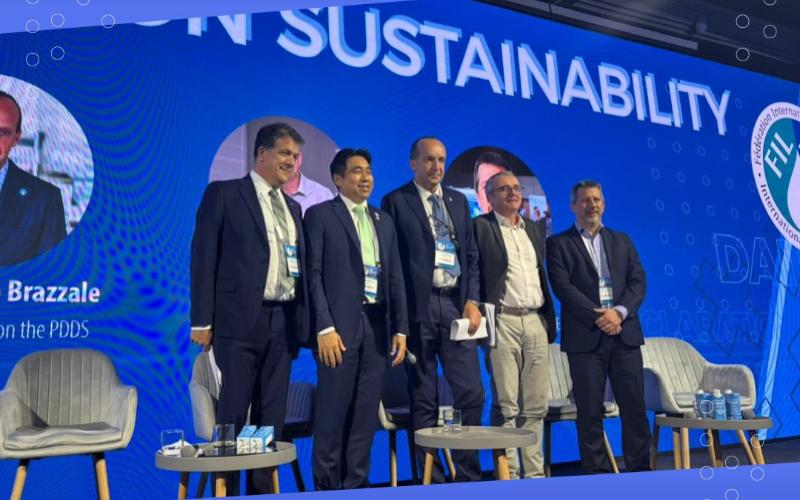Shifting Consumer Preferences Reshape Spending Patterns in India
Source: DairyNews.today
Recent shifts in consumer behavior, revealed through macroeconomic data, suggest evolving priorities among Indian households, impacting consumer goods companies and reshaping market dynamics.

While some attribute poor September quarter performances of FMCG (Fast-Moving Consumer Goods) firms to transient factors like inflation or weather, deeper trends point to structural changes in spending habits.
From Goods to Services
An analysis of Private Final Consumption Expenditure (PFCE) data from FY12 to FY23 underscores a shift in household budgets from goods to services. Over the decade, aggregate PFCE grew at an annual nominal rate of 11%, rising from ₹56.5 lakh crore to ₹164.2 lakh crore. However, consumer services like healthcare, education, and entertainment outpaced goods in growth, expanding 212% compared to a 180% increase for goods.
In FY13, goods accounted for 53.3% of PFCE, while services comprised 46.7%. By FY23, the share of services had risen to 49.1%, with goods slipping to 50.9%. Spending on transport and communication (18.1% of PFCE) has nearly equaled food and beverages (29.5%), while categories like healthcare (5.1%) now surpass utilities like gas, electricity, and water (4.1%).
This reallocation of wallets suggests stronger growth prospects for companies catering to services, contrasting with FMCG firms struggling to maintain momentum.
Post-COVID Shifts in Consumption
The COVID-19 pandemic has further accelerated changes in consumer habits. Between FY20 and FY23, there was a noticeable pivot towards home-cooked meals, health-focused choices, and home improvements. Packaged foods and soft drinks saw reduced demand, while vegetables, dairy, and seafood gained traction. Entertainment, personal vehicles, and household appliances also experienced heightened consumer interest.
Simultaneously, tobacco use declined significantly, reflecting a broader health-conscious shift. These patterns indicate varied impacts on different sectors, with some witnessing growth at the expense of others.
Comfort with Borrowing
Indian households have also embraced borrowing to sustain elevated spending levels. Between FY13 and FY23, household liabilities grew over fivefold, from ₹3.3 lakh crore to ₹15.6 lakh crore, with loans doubling post-COVID from ₹7.4 lakh crore in FY21 to ₹15.6 lakh crore in FY23.
This borrowing binge has financed investments in residential homes and financial assets, with households nearly tripling their financial investments from ₹10.6 lakh crore to ₹29.7 lakh crore during the same period. However, rising interest rates and expanding EMIs are now straining household finances, possibly contributing to an urban consumption slowdown.
Implications for FMCG and Services
The evolution in consumer priorities suggests that the challenges faced by FMCG firms may be less about inflation or transitory factors and more about long-term changes in consumer behavior. Services-oriented sectors appear poised for stronger growth, while traditional goods-focused businesses may need to adapt to changing preferences to sustain relevance in an evolving market landscape.
From Goods to Services
An analysis of Private Final Consumption Expenditure (PFCE) data from FY12 to FY23 underscores a shift in household budgets from goods to services. Over the decade, aggregate PFCE grew at an annual nominal rate of 11%, rising from ₹56.5 lakh crore to ₹164.2 lakh crore. However, consumer services like healthcare, education, and entertainment outpaced goods in growth, expanding 212% compared to a 180% increase for goods.
In FY13, goods accounted for 53.3% of PFCE, while services comprised 46.7%. By FY23, the share of services had risen to 49.1%, with goods slipping to 50.9%. Spending on transport and communication (18.1% of PFCE) has nearly equaled food and beverages (29.5%), while categories like healthcare (5.1%) now surpass utilities like gas, electricity, and water (4.1%).
This reallocation of wallets suggests stronger growth prospects for companies catering to services, contrasting with FMCG firms struggling to maintain momentum.
Post-COVID Shifts in Consumption
The COVID-19 pandemic has further accelerated changes in consumer habits. Between FY20 and FY23, there was a noticeable pivot towards home-cooked meals, health-focused choices, and home improvements. Packaged foods and soft drinks saw reduced demand, while vegetables, dairy, and seafood gained traction. Entertainment, personal vehicles, and household appliances also experienced heightened consumer interest.
Simultaneously, tobacco use declined significantly, reflecting a broader health-conscious shift. These patterns indicate varied impacts on different sectors, with some witnessing growth at the expense of others.
Comfort with Borrowing
Indian households have also embraced borrowing to sustain elevated spending levels. Between FY13 and FY23, household liabilities grew over fivefold, from ₹3.3 lakh crore to ₹15.6 lakh crore, with loans doubling post-COVID from ₹7.4 lakh crore in FY21 to ₹15.6 lakh crore in FY23.
This borrowing binge has financed investments in residential homes and financial assets, with households nearly tripling their financial investments from ₹10.6 lakh crore to ₹29.7 lakh crore during the same period. However, rising interest rates and expanding EMIs are now straining household finances, possibly contributing to an urban consumption slowdown.
Implications for FMCG and Services
The evolution in consumer priorities suggests that the challenges faced by FMCG firms may be less about inflation or transitory factors and more about long-term changes in consumer behavior. Services-oriented sectors appear poised for stronger growth, while traditional goods-focused businesses may need to adapt to changing preferences to sustain relevance in an evolving market landscape.














